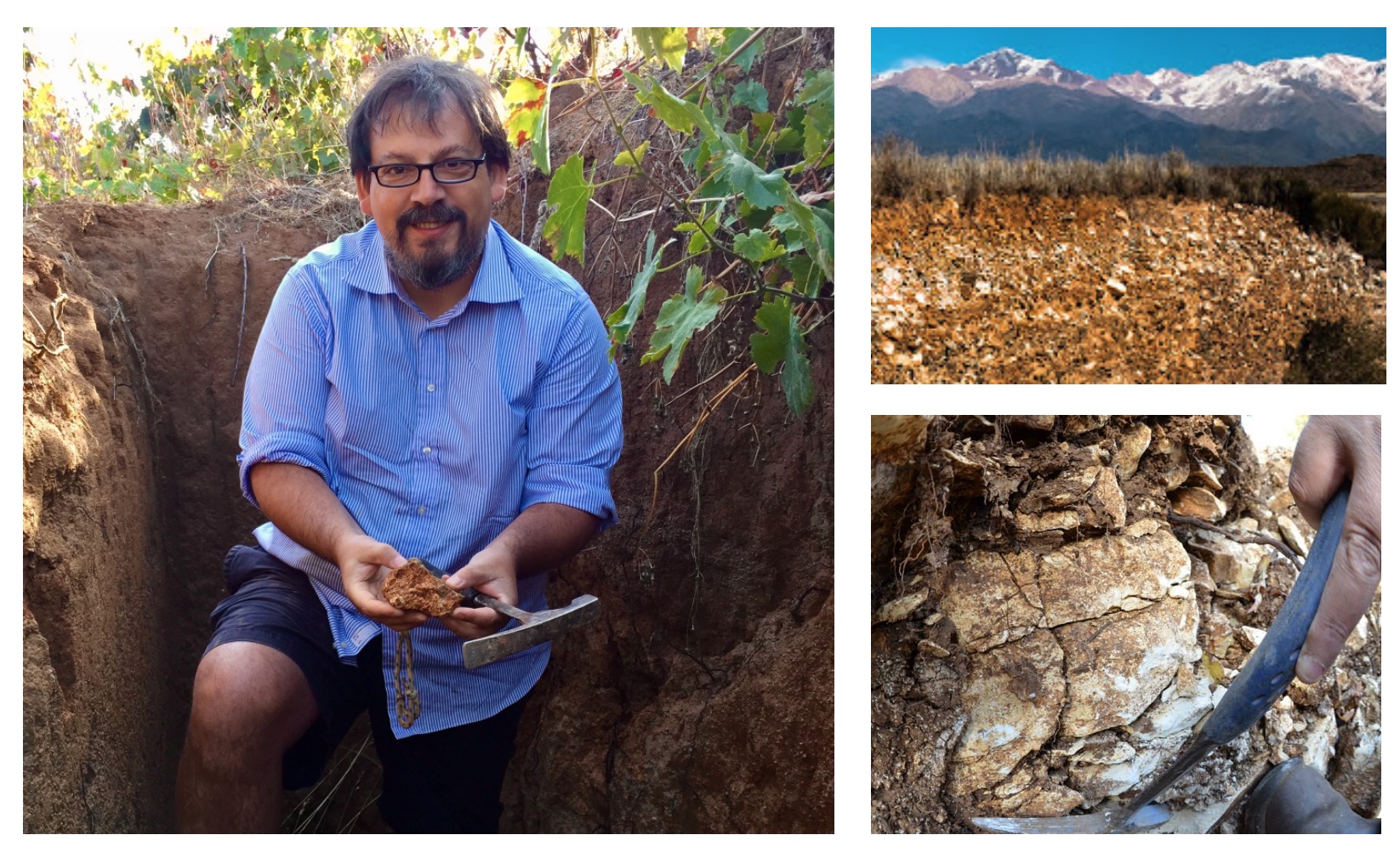Chilean-born Pedro Parra is one of the world’s leading terroir experts with a PhD in Terroir from Institut Agronomique National in Paris. Taking into account the relationship between geology, geomorphology, climate, soils, viticulture and winemaking, Pedro is an international consultant and has prolific experience in South America, where he has consulted over 50 wineries and dug over 20,000 soil pits between Chile and Argentina. In this interview, he shares his perspective of the top terroirs of Chile and Argentina.
“When I started consulting in South America in 2003, I was trying to help people understand what they had as terroir. Back then no-one was talking about soil. In Argentina, for instance, people were talking about altitude but not soils — there was no mention of alluvial terraces vs. clay, for example. I think the impact of producers looking at their soil type has had a big impact on wine production since.
Argentina is, in my experience, 99% alluvial soils, and out of the 10,000 soil pits I’ve been in, maybe 90% is simple alluvial soil, while 10% is complex alluvial soil. No-one likes to hear ‘simple’ but they forget that only 1% of Burgundy is Premier Cru!
Although simple is nothing special, the complex alluvial soils have very high quality clay, called montmorillonite clay, and some have a limestone component. It’s calcium carbonate technically, but in the mouth it feels the same as wine grown on limestone. Clay is like chocolate — you can get chocolate for a dollar at the local petrol station, or chocolate for $100 dollars from a top Parisian chocolatier! Argentina is very lucky because you have some exceptional clay, and some limestone.
Argentina’s most exciting terroirs in my opinion are those that have limestone, which you find in some certain places in Altamira and Gualtallary. It is very random in its distribution, you might have limestone while your neighbour doesn’t have any!
In Chile, most simply put, we have three major soil separations. The volcanic soils which come from the piedmont, or slopes, of the Andes range, and the granite soils from the slopes of the coastal range, and then in the middle — in the valley floor [aka. Entre Cordilleras], we get this vomit of the different slopes: which can be alluvial, colluvial and somewhere in between.
I think the most exciting terroirs are the fantastic granite soils we have — which we haven’t fully explored enough yet. You get perfect granite soils for vineyards ranging from Alcohuaz in Elqui down to Guarilihue in Itata. The granite in Guarilihue is very special because it has a lot of silt, which emulates limestone in the palate — this elegant minerality, a good mid-palate and a very long finish. In that sense it is quite similar to Gualtallary in Argentina. For me these ‘two Gs’, if you like, Gualtallary and Guarilihue, are the two top terroirs of South America.
But I am convinced that the best stuff in Chile hasn’t been discovered yet. I think in Southern Chile, below Malleco and into the lakes regions, there’s a great potential as the climate is similar to Oregon or New Zealand, you can dry farm, and there are many interesting virgin soils which have never been planted before. The future is definitely in the south.
I believe that to make outstanding wine you need outstanding terroir. Ultimately, terroir is much more important than the winemaker.”
Want to dig further into the terroirs of South America? Check out our Terroir Talks with some of the top winemakers on the continent!
